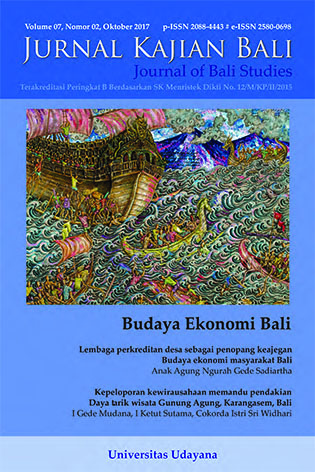From Agama Hindu Bali to Agama Hindu: Two styles of argumentation
Abstract
This paper attempts to compare two different styles of argumentation, composed by Balinese at pivotal turning points of their religious identity. The first one, set in the 1920s, when Balinese intellectuals were starting to assess the foundations of their “Balineseness” (Kebalian), contrasts the argumentation of Bali Adnjana (1924-1930) with that of Surya Kanta (1925-1957), by focusing on the use of dialogue as rhetorical device by Tjakra Tanaja, the editor of Bali Adnjana. The second moment takes place in the 1960s, after the Balinese leaders had succeeded in having their religion officially recognized by the Indonesian Ministry of Religions, under the condition that it would no longer be exclusively theirs. It expounds the Upade?a Tentang Ajaran-Ajaran Agama Hindu, the Hindu catechism composed by the Parisada Hindu Dharma in 1967, once the dogmatic contents of the Agama Hindu – the Panca Çraddha – had been fully delineated in 1964. While the Upade?a is also presented in the form of a dialogue between the guru ??i Dharmak?rti and his ?i?ya Sang Suya?a, its argumentation differs strikingly from the one used in Bali Adnjana.
Downloads

This work is licensed under a Creative Commons Attribution 4.0 International License.



















